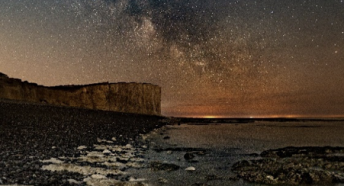Star Count data backs up picture of a divided Sussex
- National Park and AONBs enjoy some of the country’s best dark skies
- Urban areas in Sussex are deprived of the stars
- Nearly 90% of citizen scientists in Sussex experienced light pollution
Star Count 2023 results published today (April 27) have reinforced the picture of a divided Sussex when it comes to enjoyment of the night sky – and the disruption of light pollution.
While Sussex has some of the best dark skies in areas like the South Downs National Park (SDNP) and Areas of Outstanding Natural Beauty (AONBs), in urban areas we are deprived of the stars.
This supports the findings of previous research including the Vanishing Stars report in 2020 and data from the SDNP and High Weald AONB.
CPRE Sussex director Paul Steedman said: “The latest Star Count reminds us how important it is to protect our dark skies areas. However, it also highlights how far we have to go to reduce light pollution in urban areas. Cutting light pollution improves people’s health and wellbeing, protects birds and other nocturnal wildlife from harm, saves money and reduces wasted energy. We need to take action now.”
During CPRE’s Star Count week in February, citizen scientists across East and West Sussex counted the number of stars they could see with the naked eye within the constellation of Orion.
If people count fewer than ten stars they are experiencing severe light pollution and counting more than 30 stars is truly dark skies.
Nearly 90% of respondents in Sussex counted 20 stars or fewer. Of those, around half could only see 10 or fewer stars.
Stargazers in Rother and Wealden Districts had the best views of starry skies. In West Sussex there were pockets of darker skies in the Arun, Horsham and Chichester districts.
In evidence presented to the House of Lords Science and Technology Committee, CPRE recommended local authorities have legal powers to control light pollution through planning regulations.
Key changes to national and local planning policy were also identified that, if implemented, should lead to a step-change in reducing light pollution.
Find out more about what CPRE Sussex is doing to tackle light pollution at cpresussex.org.uk/what-we-care-about/nature-and-landscapes/dark-skies





